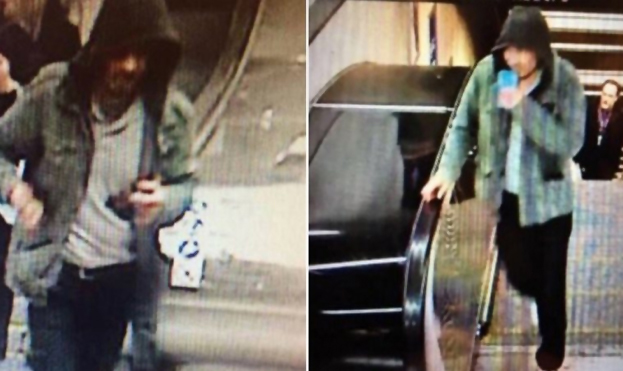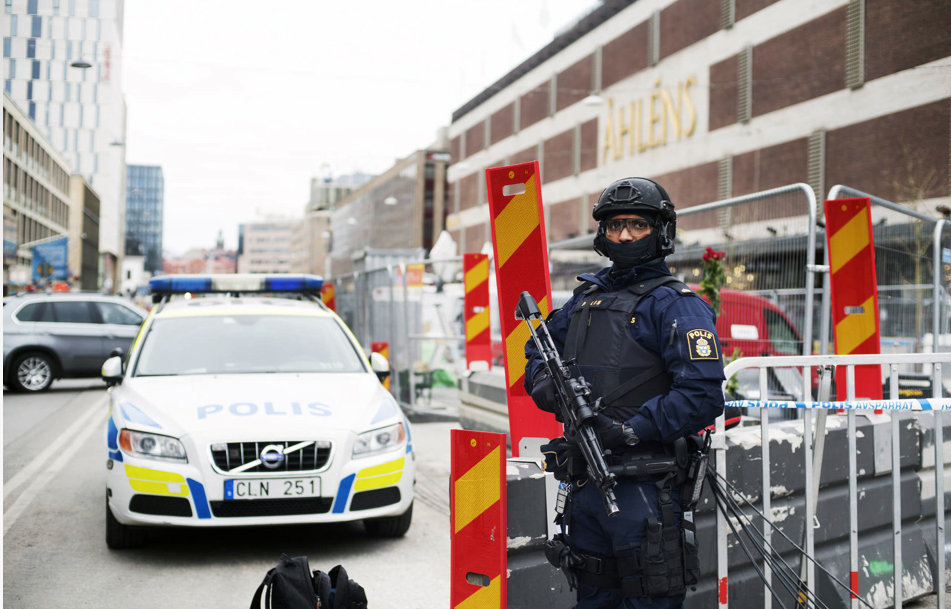Uzbek native behind the terror attack
The 39-year-old suspect from Uzbekistan had been denied asylum status in 2016. Second suspect arrested.
-
 These handout images from Swedish police circulated already in the night of the attack show the man who was later identified as Rakhmat Akilov disappearing from the area. The terror attack when a truck drove into pedestrians on Friday, April 7, 2017 in a busy shopping area of central Stockholm killed at least three and injured fifteen.
These handout images from Swedish police circulated already in the night of the attack show the man who was later identified as Rakhmat Akilov disappearing from the area. The terror attack when a truck drove into pedestrians on Friday, April 7, 2017 in a busy shopping area of central Stockholm killed at least three and injured fifteen. -
-
As the investigation of the April 7 terrorist attack unfolds, Swedish police revealed new details within hours: The main suspect in the deadly Stockholm truck rampage is a rejected asylum-seeker and an Islamic State sympathizer, according to investigators. A second suspect in the case was also arrested Sunday morning after several people had been apprehended by police during the night.
The main terror suspect and driver of the truck, Rakhmat Akilov, 39, from Uzbekistan, became wanted by the police in February this year. He was denied a residence permit in Sweden and had four weeks to leave the country voluntarily — then he disappeared. Swedish security police, Säpo, were already aware of Akilov’s links to the terrorist group IS. He applied for a residence permit in Sweden in November 2014 and the negative decision was taken on June 15, 2016.
According to reports from Sweden Akilov has admitted to driving the truck during interrogations by the police, expressed his content with the result and allegedly demanded a sunni defense attorney to represent him during trials. -
 Heavily armed police outside Åhléns. Photo: Linnea Rheborg/Bildbyrån
Heavily armed police outside Åhléns. Photo: Linnea Rheborg/Bildbyrån -
-
18,000 extradition cases
Swedish Police are currently handling around 18,000 open extradition cases submitted by the Swedish Migration Board. Of these, around 12,500 people have disappeared according to the police's own data. Three thousand of them are in the Stockholm region.
But Rakhmat Akilov was not a case like others. Säpo became interested in him already 2016, before the police took up their search for him. “He has appeared in some intelligence reports, but the information could not be confirmed,” the chief of Säpo, Anders Thornborg told the press.
The authorities have been criticized for not having more stringent plans in place when asylum seekers are rejected. “The situation should bee reviewed and a regulatory framework established that provides the necessary conditions for the country's authorities to fulfill this mission. It should not be that difficult,” claimed the criminologist and author Leif G.W. Persson in interviews.
Last fall, Minister of the Interior Anders Ygeman and Minister of Justice Morgan Johansson suggested a set of new tools for police to quickly get rejected asylum seekers to leave the country. Among other things, it would give the police the opportunity to carry out raids on workplaces to examine who works there, something that currently requires a suspected crime. The government's aim is for the tools to go into effect on January 1, 2018. “We have worked to increase the return and get a better return process, and it was 55 percent more who returned in 2016 compared with 2015. But more measures remain to improve the return,” Ygeman now says. -
-
